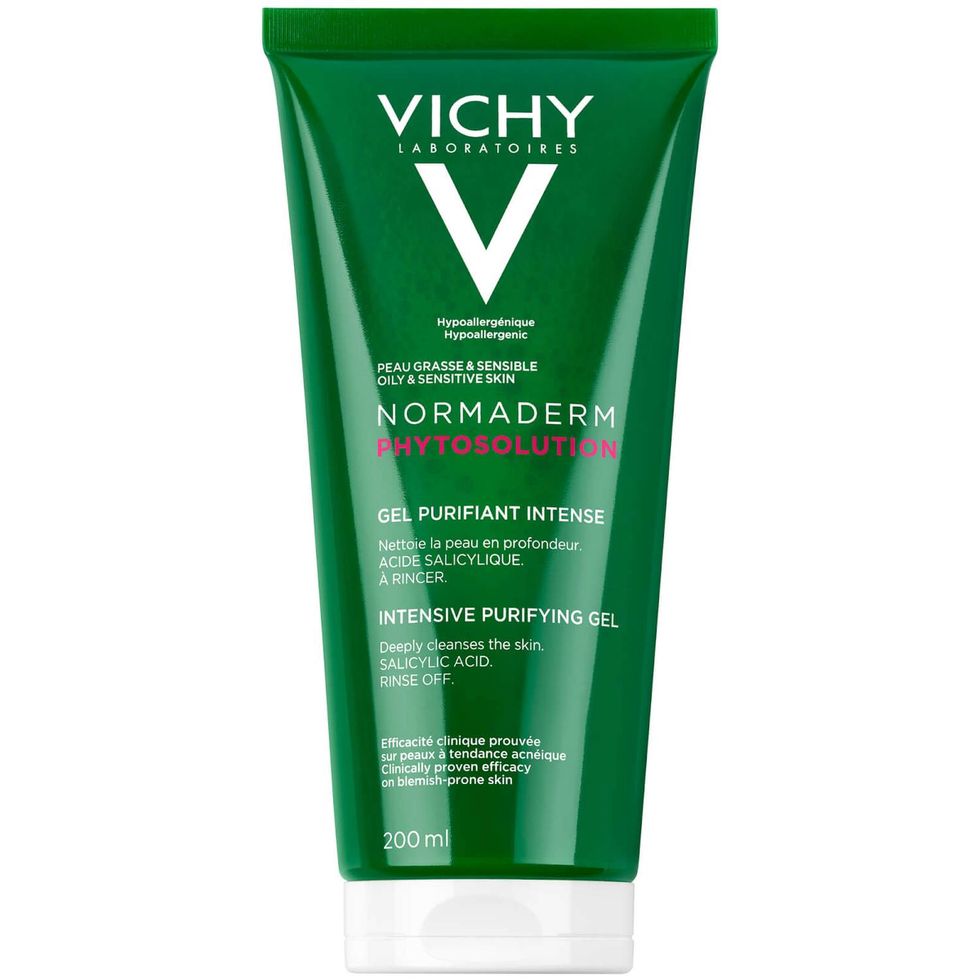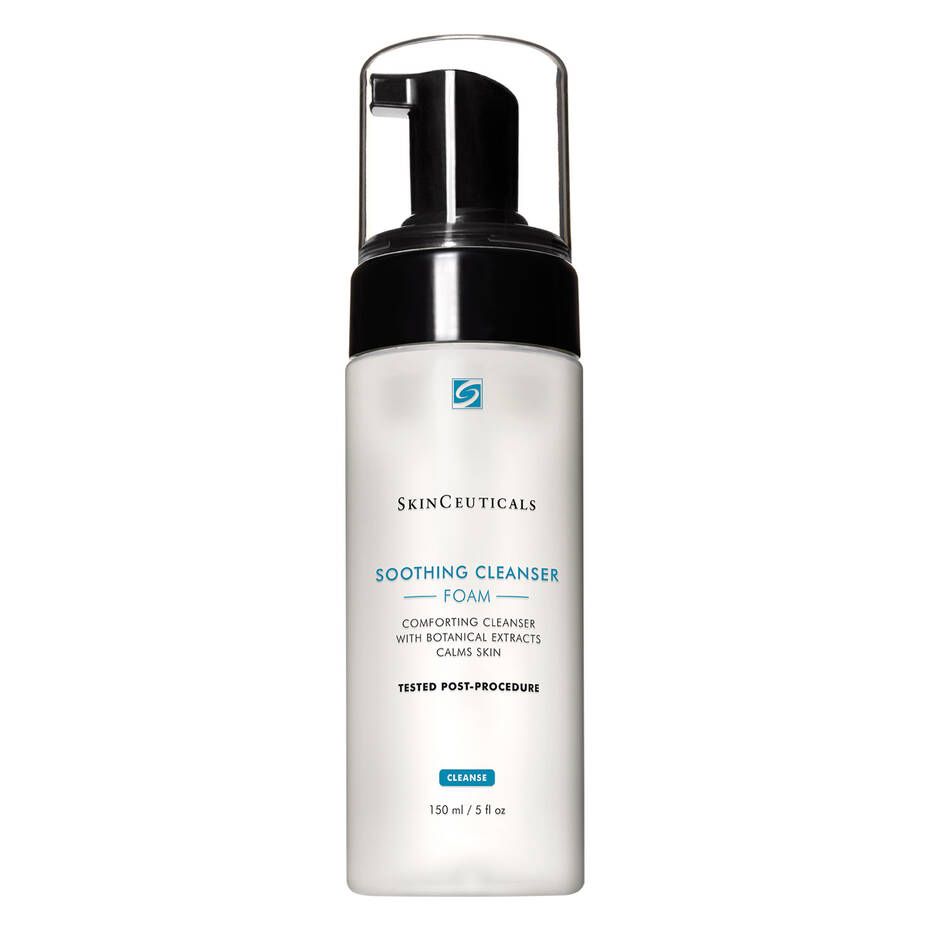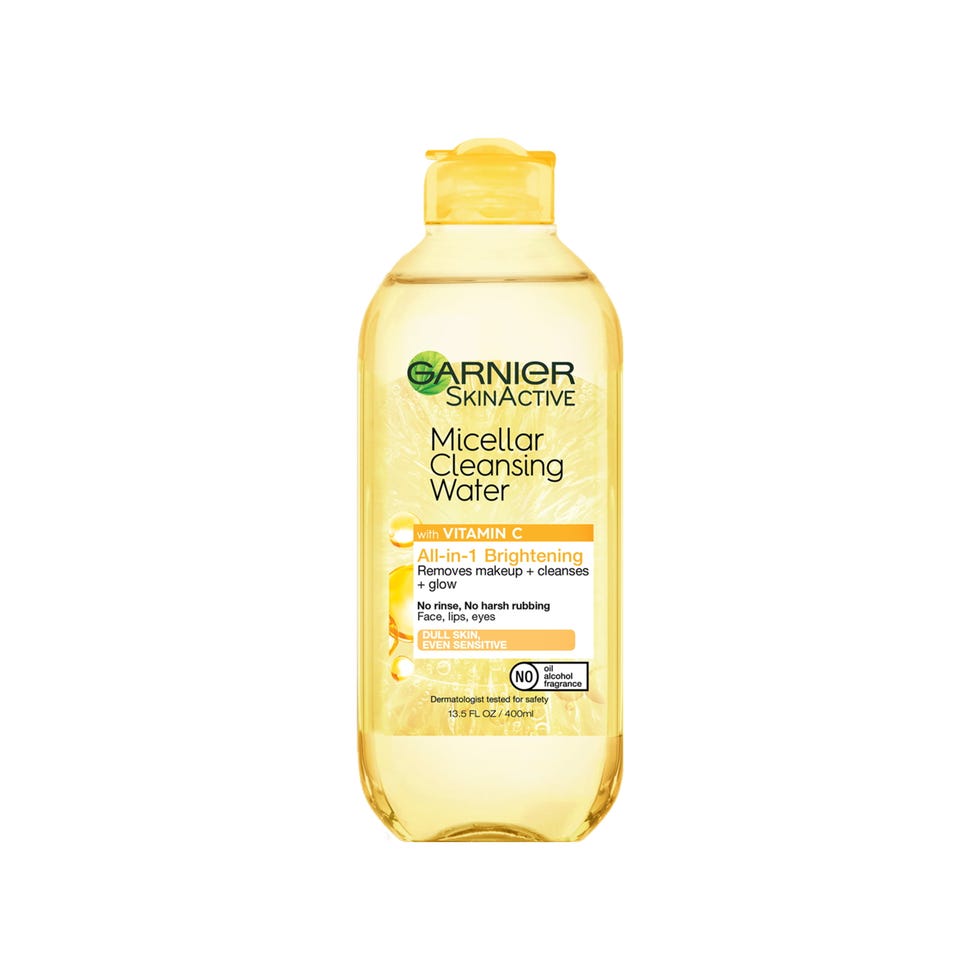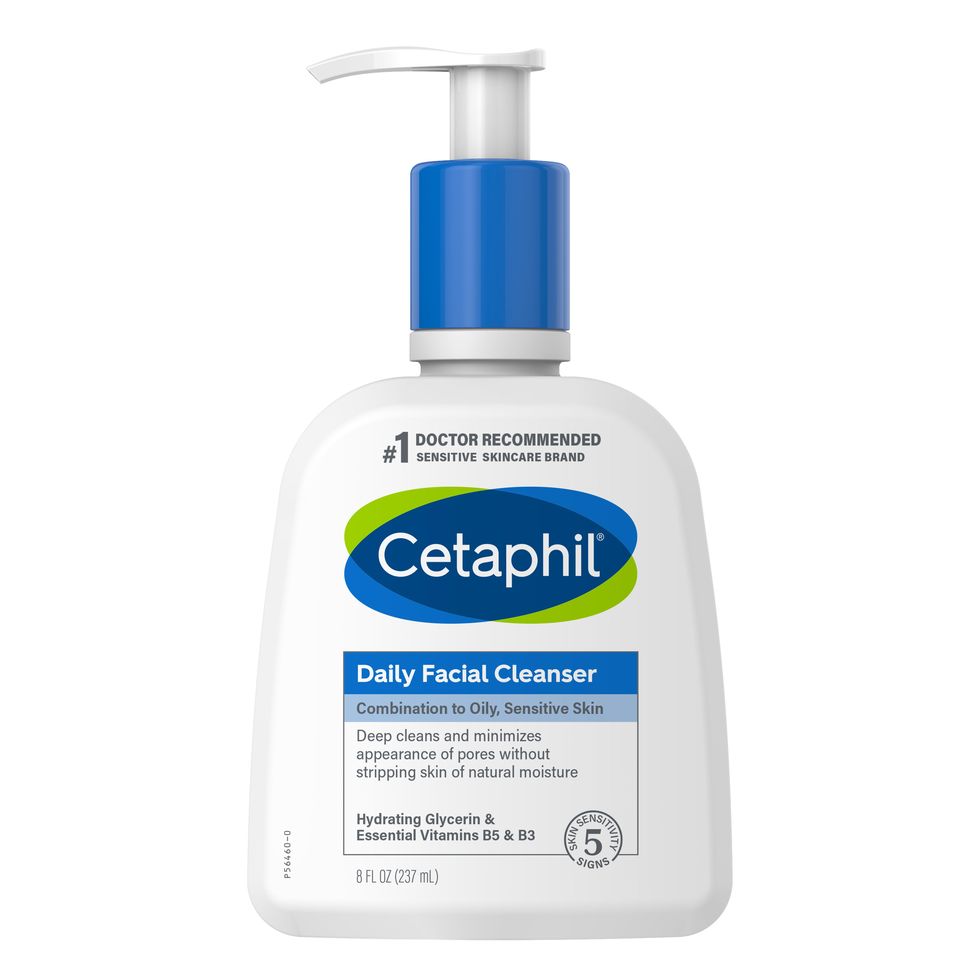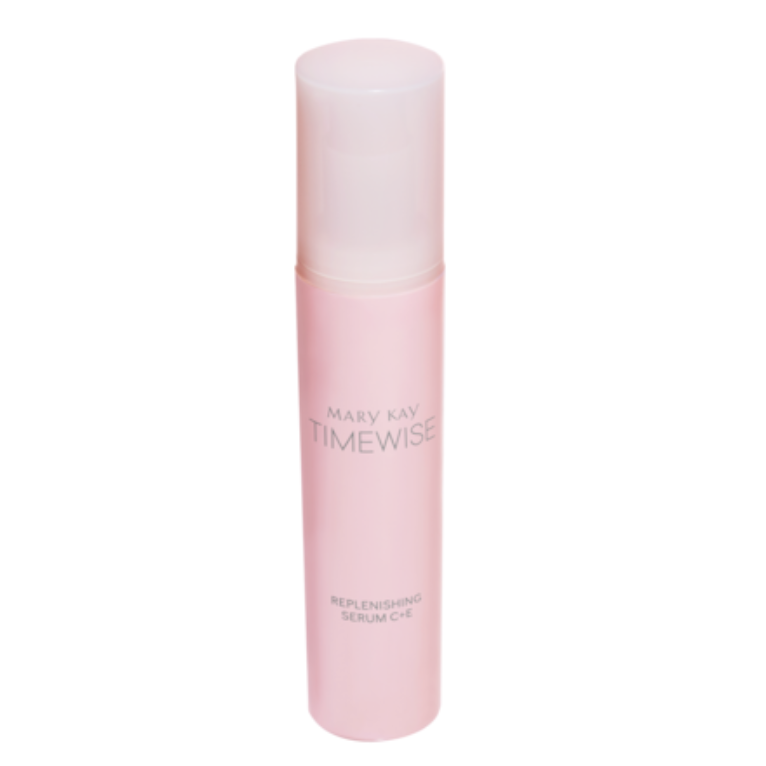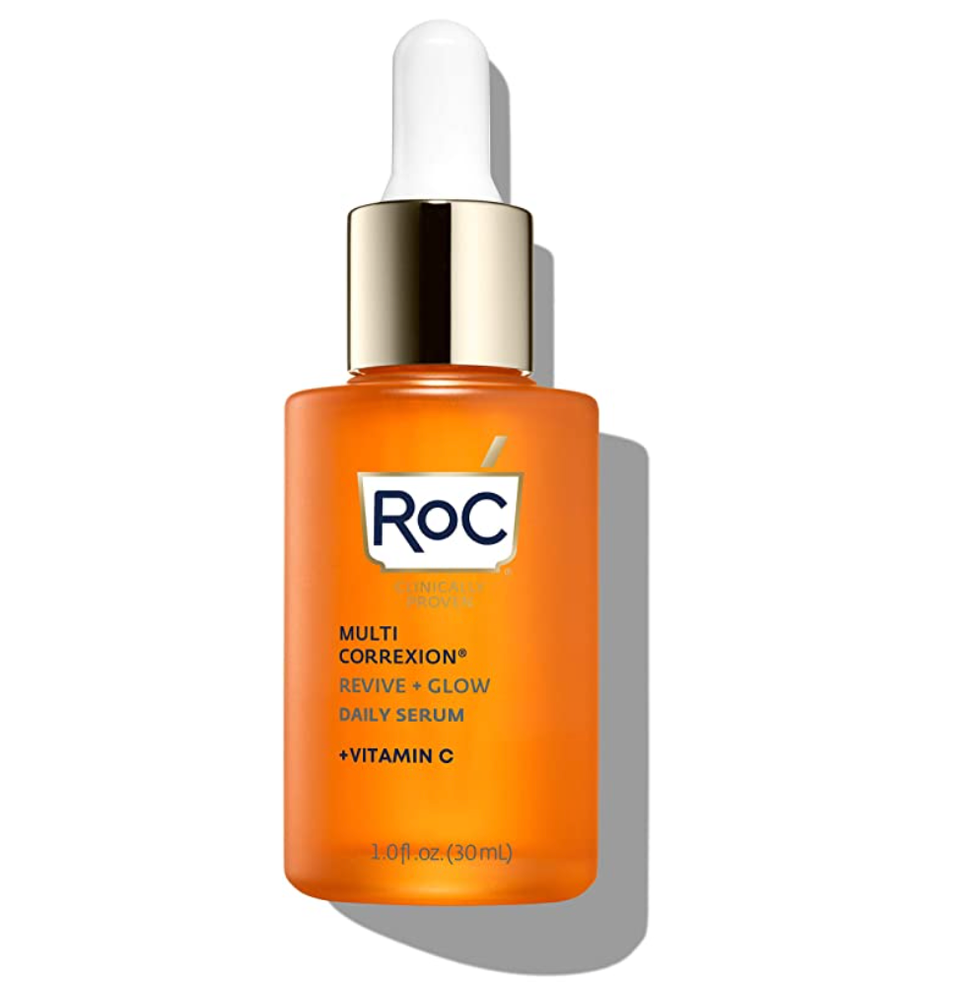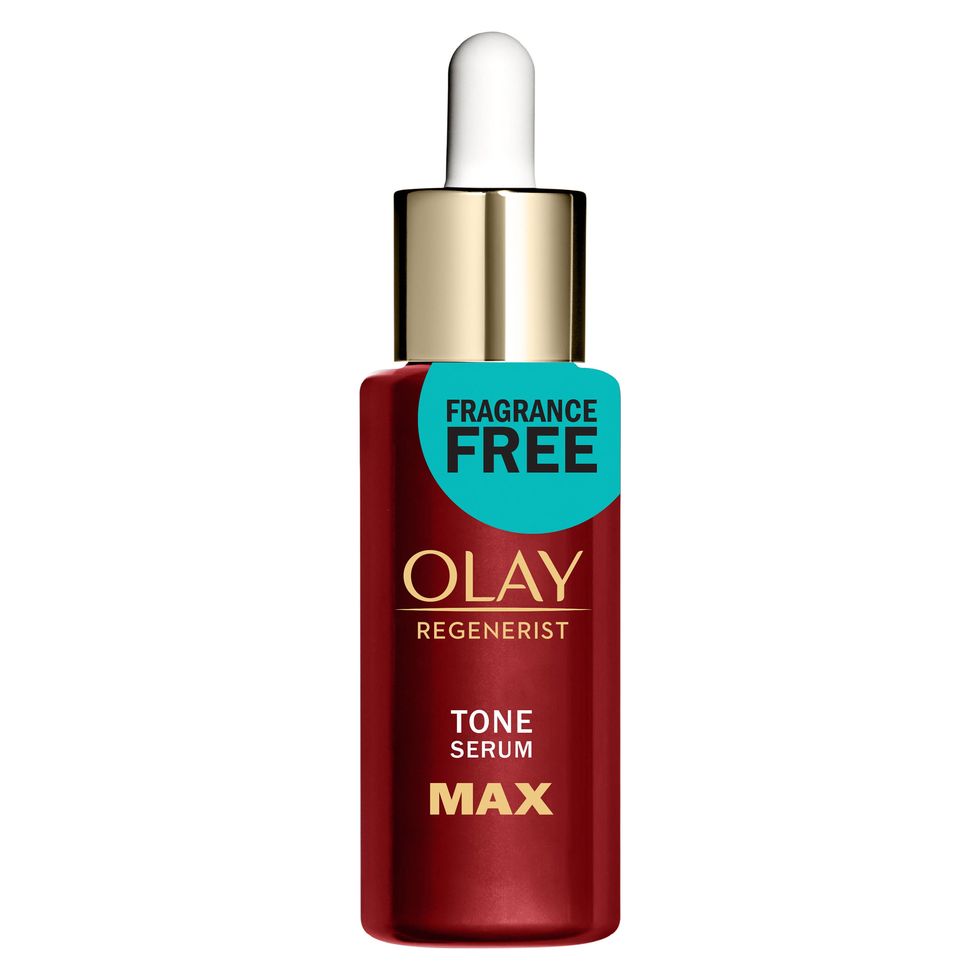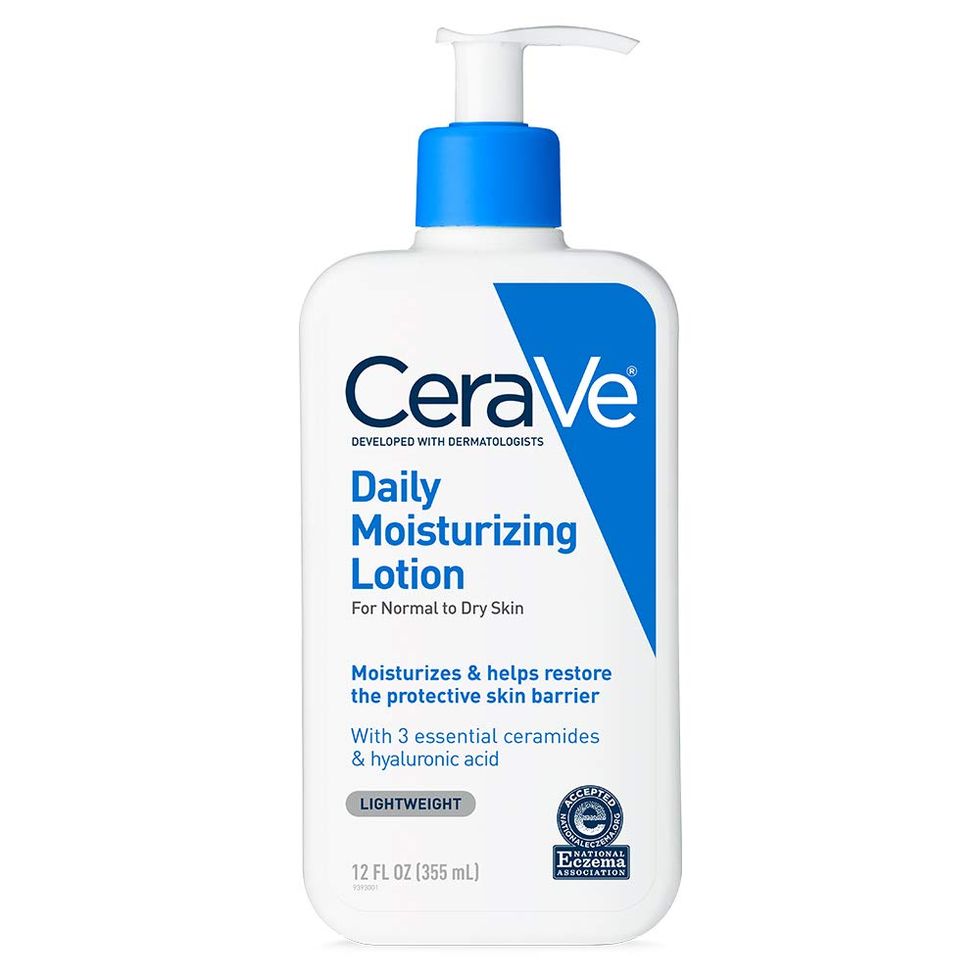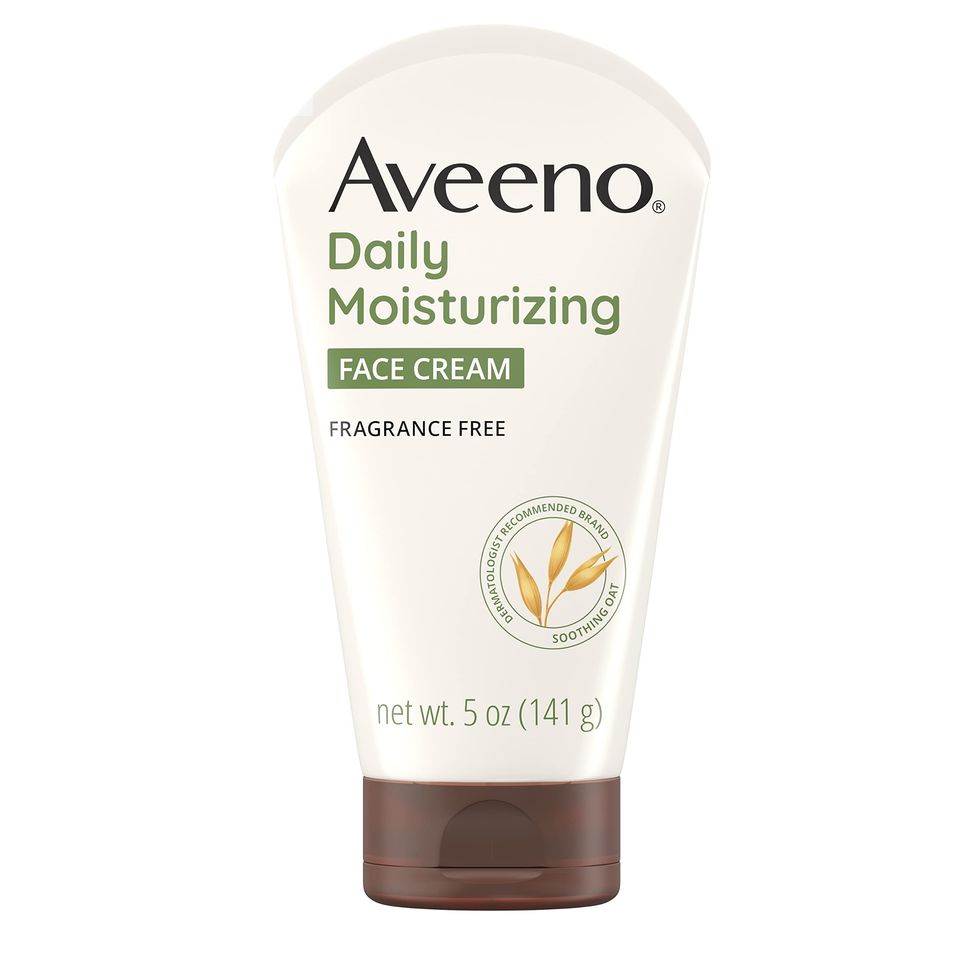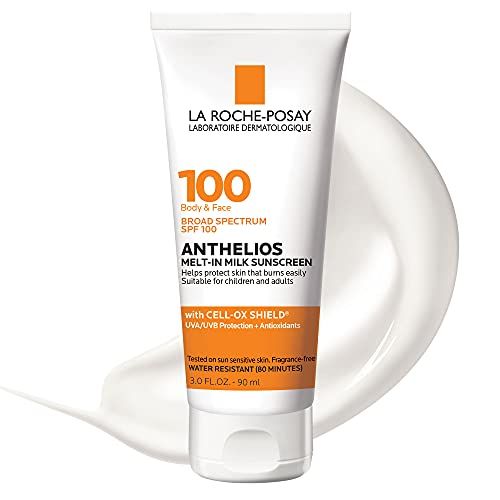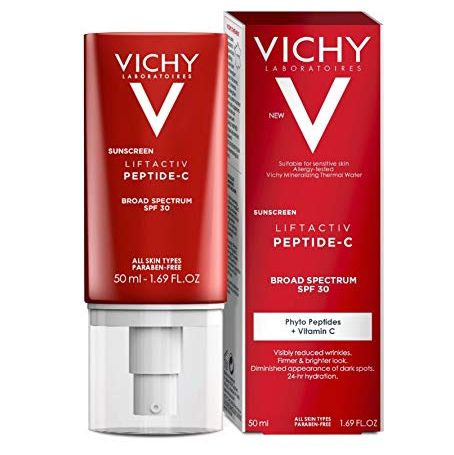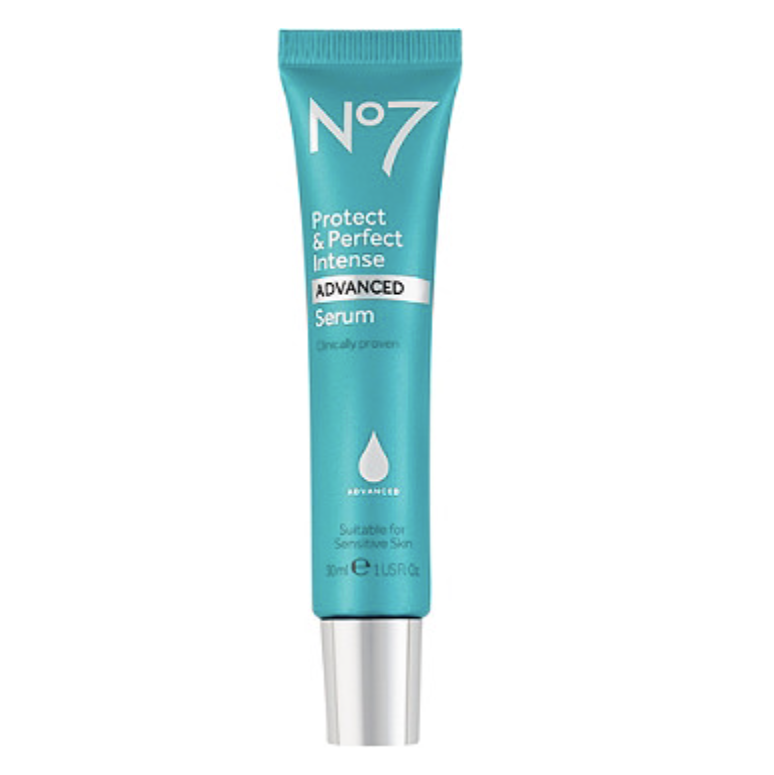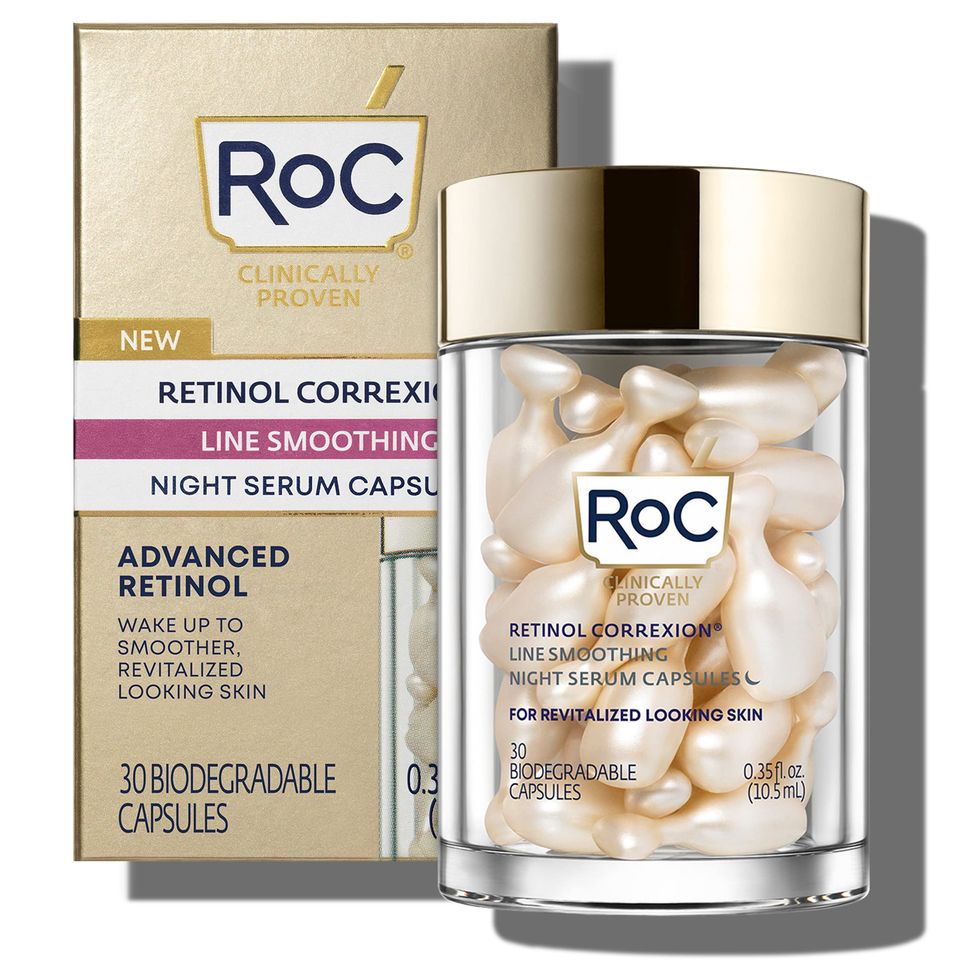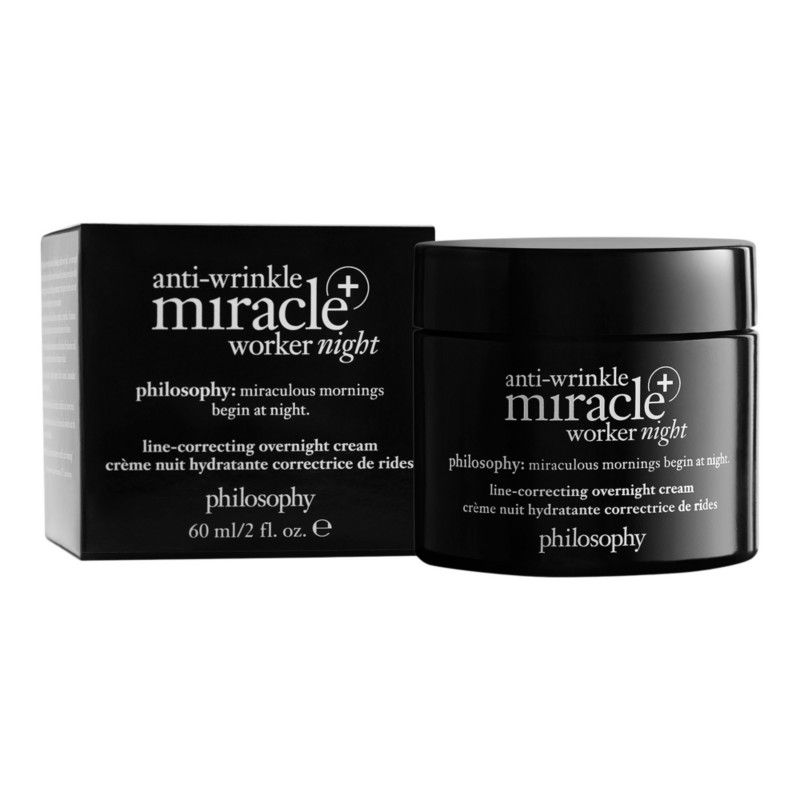[ad_1]
If you want a healthy, glowing complexion, nailing down the perfect routine for your skin type is key. But that can be easier said than done — between the hundreds of skincare products available in stores and the endless tips and tricks from influencers on TikTok, it can be hard to figure out the best regimen to follow.
While there is no one right way to take care of your skin, we spoke with top dermatologists to help you figure out where to start and what to keep in mind while building the best skincare routine.
How do I start a daily skincare routine?
To get the most benefit from a daily skincare regimen, no matter what your skin type, you should start with three simple steps, according to Ashley Magovern, M.D., a dermatologist and owner and founder of Manhattan Dermatology in Manhattan Beach, California:
You probably already know that cleansing means washing your face and moisturizing means hydrating your skin, but what does “treating” involve? Well, in addition to keeping your complexion in tip-top shape, the goal of any good skincare routine is to target problem areas. So, treating means incorporating serums packed full of beneficial skincare ingredients like vitamin C, retinol, alpha hydroxy acids and others, depending on your skin type and the results you want to see.
“Adding a middle step in between the cleansing and moisturizing components is really important,” Dr. Magovern says. “It can make a huge difference over time in the health, appearance and aging of your skin.”
Stick with it! Good things come to those who wait — and that includes skincare routines. Even the best skincare products take time to work, so don’t expect results overnight. If you stick to a consistent, daily routine, you can likely expect to see some benefits within six to 12 weeks — and it can often take at least three to four months to know if your new routine is really working.
Here, the best dermatologist-approved daily skincare routines for morning and night, including the basic steps that should be in every at-home regimen for oily, dry, combination or acne-prone skin (we’ve included the Good Housekeeping Institute Beauty Lab‘s top-tested product picks for each step, too).
Morning Skincare Routine Steps
1. Cleanser
Face cleansing should be the first step in any skincare routine, as it clears away impurities and excess oil that can clog pores and dull skin. But be gentle: “Many people cleanse too often or use a cleanser that’s overly harsh, which will actually break down your skin’s protective barrier,” Dr. Magovern says. If you have dry or sensitive skin, try washing only at night and rinsing your face with water in the morning.
The best formulas will gently cleanse your skin without stripping it of healthy oils. “A [good] sulfate- and soap-free cleanser for the face will be pH-balanced and gentle to maintain the skin’s barrier without stripping,” says Whitney Bowe, M.D., a dermatologist in New York City and author of The Beauty of Dirty Skin. For everyday cleansing, here’s how to shop for the best facial cleanser based on your skin type:
- Oily skin: A foaming or gel cleanser will ensure adequate removal of excess dirt and oil from your skin; ingredients like niacinamide and salicylic acid can help regulate and remove excess oil.
- Acne-prone skin: A gentle foaming cleanser with acne-fighting ingredients like salicylic acid, glycolic acid, benzoyl peroxide or sulfur is your best bet.
- Dry skin: Look for a lotion, cream or balm formula with hydrating ingredients like ceramides, glycerin, hyaluronic acid and botanical oils.
- Sensitive skin: Try a micellar water, an ultra-gentle cleanser that includes tiny particles called micelles that trap impurities and lift them away without drying your skin in the process.
2. Toner
Toners are skincare liquids that are applied to dry skin after cleansing using fingers, a cotton ball or cloth, and before using other leave-on skincare treatments like serums and moisturizers. A good toner can help ensure your skin is totally clean and grime-free, plus give it an extra dose of active ingredients.
You don’t need a toner, but swiping one on can be a great way to refresh skin, remove any residual debris and balance pH, Dr. Magovern says. If you’re looking for additional complexion-purifying and brightening benefits, today’s toners are much more advanced than the drying alcohol- and astringent-based formulas of the past, packed with skin-boosting benefits that can leave you glowing. Here are the ingredients you’ll want to look for, based on your skin type:
- If you have acne-prone skin, look for a toner with hydroxy acids, including salicylic acid and lactic acid, which increase cell turnover.
- For dry or sensitive skin, seek out a hydrating toner (or its sister, an essence) made without parching alcohol and with ingredients like glycerin and hyaluronic acid to soothe.
- For combination skin, opt for gentle exfoliants, hydration boosters and antioxidants like vitamin C, vitamin E and green tea, which can combat free radicals and prevent skin damage.
- For oily skin, look for astringents, such as alcohols or witch hazel, that tighten pores.
3. Serum
A serum tailored to your skin concerns can both treat and protect, delivering concentrated amounts of powerful ingredients that can address a number of complexion issues, from wrinkles to dark spots — and if you have multiple concerns, you can use several different serum formulas. Just be sure to read the labels carefully, because some serums are best used in the morning, while others are ideal for nighttime.
One serum anyone can benefit from in the morning? An antioxidant serum, which will prevent the formation of free radicals and lessen signs of aging over time. Vitamin C is considered the gold standard antioxidant. “Everyone should use vitamin C, no matter what age,” Dr. Magovern says. “It helps reverse a lot of the skin damage we get from the sun and pollution.”
For darker skin tones, hyperpigmentation can be a common issue, and using a vitamin C serum in the morning can also help mitigate dark spots, says Jennifer David, D.O., a dermatologist in Philadelphia and founder of Skin & Scripts Virtual Dermatology.
In addition to antioxidant serums, you can try anti-aging serums featuring the following ingredients to address wrinkles, fine lines and more:
- Hyaluronic acid serums: They draw moisture into the skin, combatting dryness and dullness and also plumping skin.
- Niacinamide: A form of vitamin B3 that brightens and evens skin tone, boosts collagen production and calms inflammation.
- Retinoids: Stimulate cell turnover to increase collagen production and reduce wrinkles and hyperpigmentation. Retinol is best used at night.
- Peptides: Made of amino acids, they are the building blocks of collagen and can boost its production to smooth lines and increase skin’s firmness.
4. Eye Cream
Eye creams are different than face creams because they’re formulated specifically for the delicate eye area, which ages faster than the rest of your face — and therefore fall into the “treat” category, too. If you’re concerned about fine lines, wrinkles, a lack of firmness, dark circles or undereye bags, an eye treatment product is definitely a good option.
To target dark circles, seek out niacinamide or vitamin C; and for puffiness, use a formula with caffeine, advises Marnie Nussbaum, M.D., a dermatologist in New York City and clinical instructor of dermatology at Weill Cornell Medical College. For wrinkles and sagging, look for formulas with peptides and retinol. In addition, “vitamin K can help brighten dark undereye circles and hyaluronic acid hydrates dry skin,” says Deanne Mraz Robinson, M.D., a dermatologist in Westport, CT and assistant clinical professor of dermatology at Yale School of Medicine. To treat multiple eye area issues, shop for a combo of these ingredients targeted to your needs.
When applying in the morning and at night, lightly tap on a formula targeted to your eye-area concerns using your ring finger (your weakest) to avoid tugging on this delicate area and causing damage.
5. Moisturizer
Next come face moisturizers, which keep your skin soft and hydrated and help strengthen its barrier. If you have oily or acne-prone skin, opt for a lighter moisturizer during the daytime, such as a lotion or gel that will absorb quickly and won’t pill under makeup. If your skin is dry, try a thicker formula, like a cream. Either way, dermatologists recommend moisturizers for all skin types year round, since hydrating is crucial for keeping skin youthful and healthy. “Look for ingredients like ceramides or hyaluronic acid, since these ingredients are the building blocks of moisture retention in skin,” Dr. David explains.
Expert tip: Massage moisturizer in as you apply it, which will increase its absorption and effectiveness, plus improve circulation.
Here’s how to pick a moisturizer formula, based on your skin type:
- Dry skin: A rich cream packed with emollients, humectants, ceramides and occlusives is key to quenching dryness.
- Oily or acne-prone skin: Look for light lotions or gel-based formulas labeled “non-comedogenic” or “oil-free.”
- Sensitive skin: Seek out formulas that are hypoallergenic and free of potential irritants, like fragrance and alcohol.
6. Sunscreen
Dermatologists agree: Sunscreen is the most important step in any skincare routine for every skin type and age. “If you don’t wear sunscreen, you might as well not do any of the other steps,” Dr. Magovern says. “The sun is the number one reason skin ages prematurely.” The damage isn’t only cosmetic, no matter what your skin color: “People of color can and do get skin cancer,” Dr. David says. “Plus, if you’re treating hyperpigmentation without daily SPF use, it’s like taking two steps forward and one step backward.”
Heads up: Protecting your skin from the sun is important even if you’re spending your days indoors, as UV rays can penetrate through the windows.
Smooth on a nickel-sized dollop of broad-spectrum SPF 30 or higher face sunscreen as the last step in your morning skincare routine, including on your neck and the backs of your hands, 30 minutes before you head outside. If you want to minimize the steps in your routine, you can use a daily moisturizer with SPF instead of applying a moisturizer and SPF separately.
There are two main types of sunscreen formulas:
- Chemical sunscreens are made with chemical ingredients like avobenzone and homosalate, which absorb the UV light that comes in contact with skin.
- Physical sunscreens (a.k.a. mineral sunscreens) contain mineral ingredients like zinc oxide and titanium dioxide, which reflect UV light off of skin.
Some SPF formulas include both chemical and physical ingredients. If you have sensitive skin, dermatologists generally recommend mineral and pure zinc-oxide sunscreens (though many chemical sunscreens have not caused irritation in GH Beauty Lab tests). For those with oily skin, look for non-comedogenic, oil-free gel formulas. If you have dry skin, avoid spray or gel sunscreens with alcohol. People with darker skin tones may prefer chemical sunscreens to avoid the white cast of some physical formulas, though brands have begun to produce mineral formulations without a chalky appearance.
Night Skincare Routine Steps
It’s important to switch up your skincare routine at night — and not just because you don’t need SPF while you sleep. Your nighttime routine is the perfect time to make sure your skin is getting as many nutrients and active ingredients as possible, since your skin regenerates and repairs itself while you snooze, Dr. Magovern says. (Hence the term “beauty sleep.”)
You’ll still follow the same basic three steps — cleanse, treat and moisturize — but at night, the regimen will look a little bit different.
1. Cleanser
First, remove the day’s makeup and grime. Start by applying a separate makeup remover, if needed, to take off any cosmetics. “Cleansers are not necessarily designed to dissolve makeup, especially on eyes, and haven’t done so effectively in our testing,” says GH Beauty Lab Senior Chemist Sabina Wizemann. Follow with the same cleanser as in the morning, working from the inside of the face up, then out and down along the hairline and perimeter to just underneath the chin, she suggests.
2. Toner
If you’re opting for a toner, apply it the same way you would in the morning. Because they’re liquids, toners should go on before heavier formulas like serums and moisturizers so they can absorb into skin.
3. Serum or Treatment
Night is an ideal time to use products with ingredients that slough off dead skin cells or stimulate cell turnover while you sleep, such as alpha hydroxy acids like glycolic acid or retinol, Dr. Magovern says. These smooth texture, brighten skin and minimize pores. (Some serums can be used day or night; follow the packaging instructions.) If you’re treating hyperpigmentation, alternate between a retinoid and the spot-fading active ingredient hydroquinone, Dr. David recommends.
4. Eye Cream
Gently dab an eye cream, or alternatively a bit of your face serum or treatment, around your eyes. “You don’t have to use a lot, but if you start training your skin to tolerate more active products around the eye, you’ll see more change,” Dr. Magovern explains.
5. Acne Treatment
If you currently have a blemish (or a few), apply an acne treatment at this time. For chronic breakouts, be proactive rather than treating pimples as they pop up, Dr. Magovern advises. “If you just treat the spot, you’ll get acne right next to it if your skin is clogged,” she says. “You’re getting breakouts because oil is building up, so be consistent with your regimen to keep pores all over your face clear.” (If using a retinoid, let skin adjust before trying acne formulas like salicylic acid.)
6. Night Cream
Moisturizing is especially crucial at night, as it creates a barrier that seals in skin’s natural hydration and any active ingredients to counteract moisture loss that happens as you sleep. But while you can use the same non-SPF day moisturizer at night, using a night-specific formula will have targeted anti-aging benefits, repairing damage from the day. “Where regular moisturizers focus on improving the natural moisture barrier of the skin only, night creams contain active ingredients that assist with improving the skin beyond adding moisture,” explains Tonya McLeod, M.D., a dermatologist in Charlotte, North Carolina.
7. Face Oil
It’s not a necessary step, but if your skin is still feeling parched, applying a face oil can be a great way to help lock in moisture overnight. “A lot of people think that if they have acne or oily skin, they’ll break out with an oil, but it’s not true,” Dr. Magovern explains. “It can actually really help soften skin.” For a nourishing boost, pat on a face oil as a last step once the rest of your leave-on skincare products dry — just be sure to apply by pressing it into your skin, not rubbing it in.
More Questions People Ask
Should I invest in any special tools or skincare gadgets?
Beyond a basic washcloth, you don’t need any specific supplies for your skincare routine, but some at-home skin tools and gadgets can deliver added benefits. Here are some worth trying:
Should I be using a face mask regularly?
Face masks can give your skin an immediate boost. Incorporate one into an at-home facial regimen once or twice per week by applying it on your clean, dry face, avoiding the eyes and mouth (unless the mask is made for those areas). Remove it per packaging instructions, and follow with other leave-on skincare products as directed or needed.
Whether you’re opting for a DIY skin treatment, a sheet mask or an overnight mask, you want to make sure you’re choosing the right face mask for your skin type:
- Oily skin: Use a mask with ingredients like clay or charcoal, which will absorb oil.
- Dry skin: Look for words on the label like “hydrating,” “moisturizing” or “nourishing” and ingredients like hyaluronic acid, glycerin, plant oils and butters.
- Sensitive skin: Seek out anti-inflammatory ingredients such as aloe and oat.
- Combination or normal: Look for face masks targeted to your current skin goals or try spot treating certain areas with multiple masks.
What about exfoliation?
Facial exfoliation is a technique that removes the skin’s outer layer of dead skin cells in order to make it smoother, brighter and clearer — yet a GH survey revealed that nearly half of women skip it in their skincare routine. There are three main types of exfoliation, each with different functions that work best for different skin types, concerns and needs.
Physical exfoliants can be applied two to three times per week in the morning or evening after cleansing. Chemical exfoliants can be applied once a week, morning or evening after cleansing, for sensitive or dry skin and three times a week maximum for other skin types. Combo exfoliants can be applied weekly up to daily, but follow the specific product’s instructions.
Does this skincare routine work for all skin types?
Yes, it’s a good general guideline and starting point for any type of skin. Remember that it’s just that: a starting point, and can and should be tweaked and customized according to your complexion’s needs. What works perfectly for your skin may not for someone else and vice versa. Finding your ideal daily routine can take trial and error, but these are the right tools to get you on your way to healthy, glowing skin.
What’s the best skincare routine for rosacea?
“Keep it simple,” says Mona Gohara, M.D., a dermatologist in Connecticut and associate clinical professor of dermatology at Yale School of Medicine. “Rosacea-prone skin is sensitive and subject to flushing, irritation and redness.” She suggests using a gentle, non soap cleanser, a barrier-repairing moisturizer and sunscreen daily. “Avoid potentially irritating products such as AHA, BHA and retinols,” she adds.
What should I do if my skin gets irritated from my routine?
If you experience any type of irritation, “go back to the basics: cleanse, moisturize, use SPF and repeat,” advises Dr. Gohara. “Then slowly reintroduce products one at a time to see if you can identify a culprit.” Remember, our skin changes with time so what may have worked for your skin before may not now.

Katie Berohn is the Beauty Assistant at Good Housekeeping, Woman’s Day and Prevention magazines, all part of the Hearst Lifestyle Group. She graduated from the University of Colorado, Boulder, with a major in journalism and minor in technology, arts, and media, and earned her Master’s Degree at NYU’s Graduate Program of Magazine Journalism. In addition, Katie has held editorial internships at Denver Life Magazine, Yoga Journal, and Cosmopolitan, a digital editorial internship at New York Magazine’s The Cut, a social good fellowship at Mashable, and has freelanced for HelloGiggles. When she’s not obsessing over the latest skincare launch or continuing her endless search for the perfect shade of red nail polish, Katie can be found in a hot yoga class, trying everything on the menu at New York’s newest restaurant, or hanging out at a trendy wine bar with her friends.
Dori Price is a New York City-based freelance writer and editor and beauty, style and wellness expert who was the Beauty & Fashion Director at Family Circle for 13 years before she joined Good Housekeeping, Prevention and Woman’s Day as a freelance beauty editor. She has also written for WomensHealthMag.com, Elle.com and HealthCentral.com.
[ad_2]
Source link


